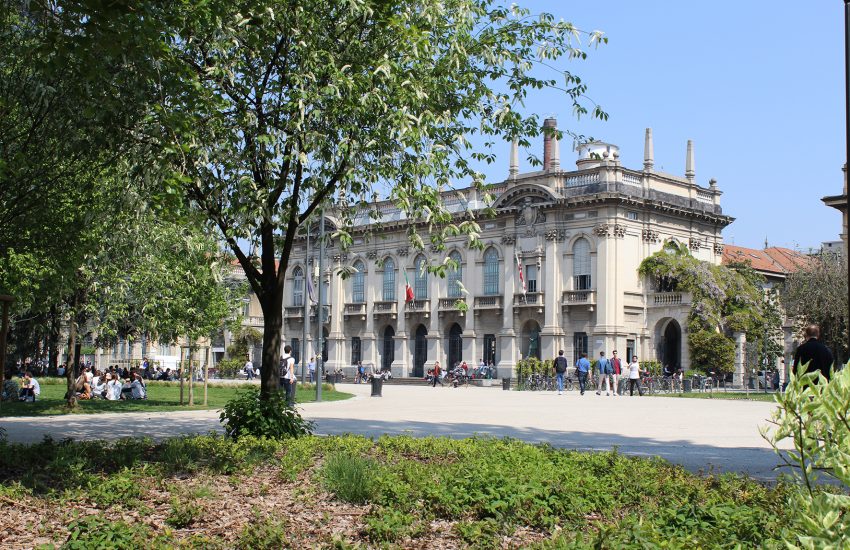Research. Our newsletter starts here. Behind these seven letters — just one word — an entire world is hidden. We want to start telling about that vast world. With a new style, with a new format. And with close attention to the stories of those who do research every day, and sometimes every night.
The stories of men and women that we will be telling on Frontiere, the new communication channel by the Politecnico (let’s call it Poli) dedicated to research and researchers. It will be a newsletter, but also much more. With a clear objective, as its name suggests: to explore new frontiers. The frontiers of research, yes, but also of everyday life. Because we may not realise it, but research is pulling the strings of the world of the future.
It can often almost seem that researchers in the remotest laboratories and classrooms at Poli are somehow detached from the outside world. That they deal with things that are too complicated, entirely incomprehensible to so-called ‘ordinary’ people. But in reality, ordinary people are also behind the research, with faces, emotions, and extraordinary paths behind them (and hopefully ahead).
In this space, we will tell the world that research must be supported day after day, not just celebrated when it becomes something tangible. Because there is a lot of sweat behind a research project. We feel the need to put that sweat to good use and try to get it across to everyone. Ok, perhaps a drop of sweat landing on you is not the best image we could give to start this new adventure. But we would rather tell it like it is and not be overly rhetorical. We could have used the word ‘sacrifice’, but we preferred a concept that was as concrete as possible. Just as we want research to be.
SELENA SIRONI’S FLAIR FOR RESEARCH

For our first interview we chose a woman. A researcher who had an idea in the late 1990s that might seem bizarre at first glance: studying smells. Or rather, bad smells. ‘I was 25 years old and few people believed that measuring smells was a discipline to be approached rigorously through the scientific method.’ But Selena Sironi was right. She is now responsible for the Olfactometric Laboratory in the CMIC (Department of Chemistry, Materials and Chemical Engineering “Giulio Natta”). She told her story and that of the lab to us at Frontiere, closing with a piece of advice to her 20-year-old self: “Awareness of one’s abilities grows with age, so I would tell myself to believe in myself”. Want to read it? Look here.
FRONTIERE MEETINGS: ANUPAMA AND POSITIVE EMPTINESS

Usually when we talk about empty space, we do so with a negative connotation. There are those who rush to fill the void and those who simply endure it. Instead, thanks to Anupama Kundoo (pictured), we realised that emptiness can also have a positive value.
The Indian architect spoke about this and much more in a long interview with us in Frontiere as part of a feature we call ‘Incontri’. Here we will host the most important people visiting the Politecnico, such as Anupama, who gave a lecture last March as part of the 10th Michele Silvers Prize.
If you like architecture, but even if you don’t, you absolutely must read it.
PHOTO NEWS

‘Made Polichina’, 11 March 2020. Yes, this quote is based on the much more famous note written by Nobel Prize winner Giulio Natta: “Made polypropylene”, 11 March 1954. Pieces of Politecnico history, which you can also find in the Made in Polimi exhibition at the entrance to the Rector’s Office at piazza Leonardo. But in the meantime, in an article in Frontiere, we look back over the 100 years that have taken us from Amuchina to Polichina.
A JOURNEY THROUGH THE POLI LABS
GVPM and LPM. Put like that, they are two simple acronyms. Yet they are two of the most important laboratories at the university. The first stages in our long journey to discover the excellence of the Politecnico. We will do this through images: photos, videos, and also the words of those who protect this excellence every day. But back to the two acronyms. GVPM stands for the Politecnico di Milano Wind Tunnel. We visited it and Marco Belloli told us how it works. Among other this, it is 20 years old this year, having been founded in 2001. Instead, the LPM, which stands for the Material Testing Laboratory, was founded in 1927. The Scientific Director in this case is Virginio Quaglini, who explained to us what is done there and why it is very important for our everyday lives.
THE MIND BEHIND THE GIURIATI

If you have stopped by in the last few weeks, you will already have noticed. The Giuriati has been completely renovated: 12 sports that can be practiced in about 36,000 square metres. For more details see the dedicated website. The beautiful inauguration ceremony was also held in May (relive it all here), so we at Frontiere took the opportunity to cover the very beginnings of this historic sports facility. And above all, to trace the life of the mind that designed it, that of Luigi Lorenzo Secchi, one of the most prestigious engineering alumni from the Politecnico di Milano.

